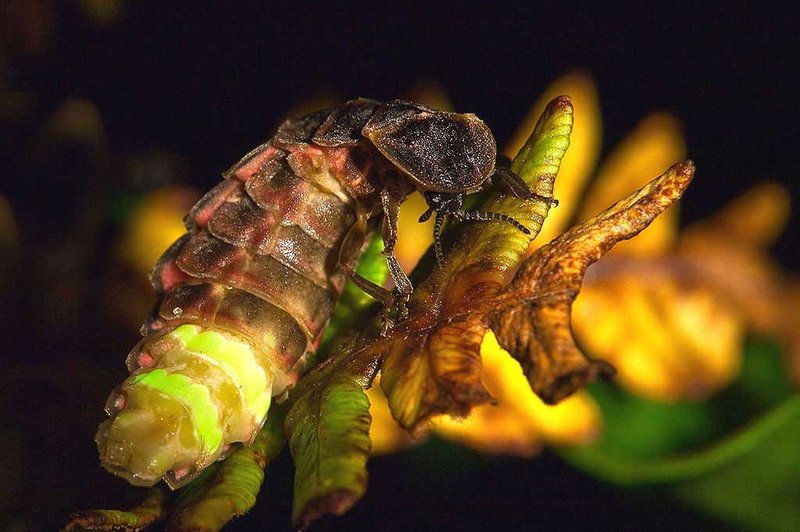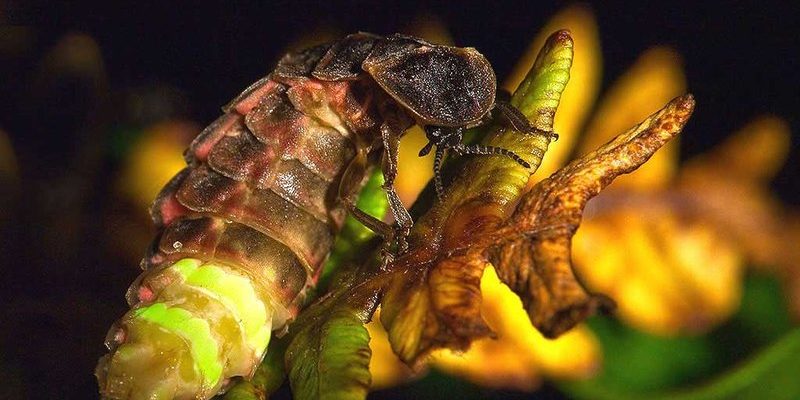
Glow worms, primarily the larvae of certain beetle species, have adapted to a unique life. They create silk threads that dangle down from their abodes, catching unsuspecting insects that are drawn to their glow. But in this intricate dance of life, they’re not just the hunters; they’re also the hunted. So, who exactly are glow worm predators? Let’s dive into this captivating world and uncover the reasons behind these natural predator-prey relationships.
The Life Cycle of Glow Worms
Before we get to who eats glow worms, it’s helpful to understand what they are in the first place. Glow worms belong to different families, with *Lampyridae* being the most popular. These creatures are the larvae of fireflies or beetles. In their larval stage, they spend several months in dark, damp habitats, using their bioluminescence to attract prey.
During this time, glow worms are busy constructing silk threads to trap insects like moths and flies. When an unsuspecting insect gets caught, the glow worm feeds off it to grow stronger for its transformation into an adult. It’s a fascinating life cycle that connects them to the larger food web. By understanding how they live, we can appreciate the balance of life in their habitats.
Main Predators of Glow Worms
So, who preys on these magical little creatures? The list is surprisingly diverse! Here’s a look at some of the main glow worm predators, and you might find a few familiar critters here.
- Birds: Many birds, particularly nocturnal ones like owls, have an excellent sense of sight in low light. They can spot glow worms easily, and a hungry owl can swoop down for a tasty snack.
- Insects: Some larger insects, like spiders and certain beetles, will also take advantage of the glow worms. They see them as a high-protein meal, especially when they find them in vulnerable positions.
- Small Mammals: Creatures like mice and shrews have been known to munch on glow worms when the opportunity arises. They help control the glow worm population, keeping it balanced with their environment.
Each of these predators plays a role in keeping the ecosystem in check. It’s a bit of a circle of life situation—glow worms provide food for others while fulfilling their role as predators themselves.
How Do Glow Worms Defend Themselves?
You might be wondering, do glow worms have any defenses against these predators? Well, they’ve got a few tricks up their sleeves.
First off, their bioluminescence is both a blessing and a curse. While it attracts prey, it also gives away their position to predators. However, glow worms can vary their light intensity, sometimes going dark to avoid detection. They also rely on their silk threads, which can entangle insects, ensuring that they get the upper hand in their battles for survival.
Furthermore, some species of glow worms produce chemicals that can deter potential predators. This means that even if they can’t outright hide, they can at least make themselves less appetizing. Nature’s clever, isn’t it?
The Role of Glow Worms in the Ecosystem
Understanding the role glow worms play in their ecosystem gives us insight into the complex interactions of nature. They’re not only a food source for many creatures but also serve as indicators of environmental health.
When glow worm populations thrive, it often means that the surrounding ecosystem is healthy. They rely on clean air, water, and appropriate humidity levels. A decline in their numbers can signify that something’s off in the environment, prompting scientists to investigate potential issues.
Moreover, glow worms contribute to nutrient cycling. When they die or when their silk is shed, it adds organic matter to the soil, enriching it for other plants and organisms. Hence, they’re not just lovely lights; they play a significant ecological role.
Conservation Concerns for Glow Worms
With such a unique role in their ecosystem, it’s essential to consider the conservation of glow worms. Many species face threats from habitat loss, pollution, and climate change. Urbanization often encroaches on their natural habitats, diminishing their populations in the wild.
Conservation efforts are crucial in protecting these glowing gems. Simple actions like supporting clean waterways, conserving natural habitats, and reducing pesticide use can make a significant difference. Plus, educating others about the plight of glow worms can create a ripple effect in the community, promoting awareness and action.
Fascinating Facts About Glow Worms
To wrap things up, let’s sprinkle in some fascinating tidbits about glow worms that illustrate just how incredible they are!
1. **Glow Worm Variety:** Not all glow worms are the same! Different species have distinct glowing patterns, sizes, and behaviors.
2. **The Glow:** It’s not their bodies that glow but rather their tails! They emit light due to a chemical reaction involving luciferin and oxygen, and it’s this glow that draws in prey.
3. **Short Adult Life:** After their larval stage, adult glow worms live a very short life—often just a few days. Their main goal during this time? To mate and ensure the next generation.
These little facts not only charm us but also deepen our understanding of their complexity and importance in nature.
Final Thoughts on Glow Worm Predators
In conclusion, glow worms captivate us with their beauty and charm. Yet, they’re more than just a pretty sight—they’re a crucial part of our ecosystem. Understanding who eats glow worms helps us to appreciate the delicate balance of nature. From birds to small mammals, each predator plays a role in maintaining that balance.
As we marvel at their glow, let’s also strive to protect their habitats and promote awareness about their conservation. After all, every light in the dark matters, and preserving these sparkling creatures can help ensure that future generations can enjoy their magic.

